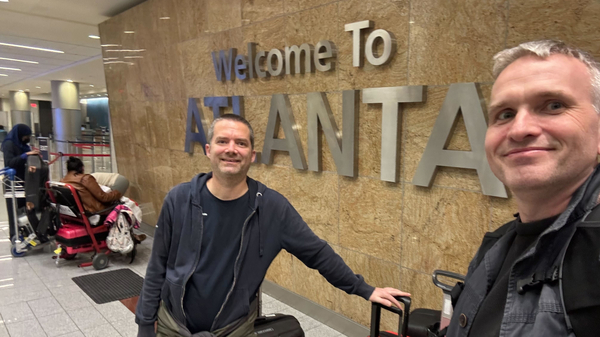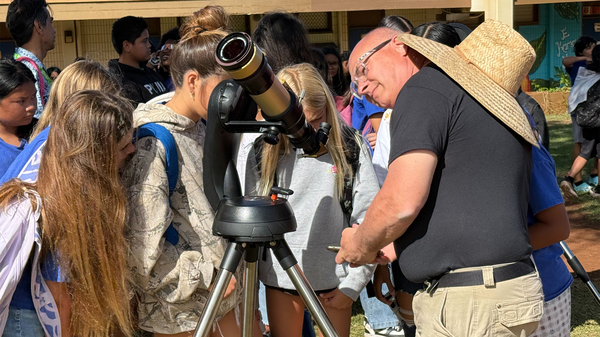Our mobile observatory is back in the USA

For the fourth time in just over 2 years, our mobile observatory is in the United States. Once again, our on-the-ground telescope team will be Steffen Thorsen and Konstantin Bikos .
The weather forecasts pointed to the Southern US, so Steffen and Konstantin flew in to Atlanta, Georgia, roadtripping to Charlotte in North Carolina for our live stream.
Explore our eclipse map for March 13–14More than an hour of totality
This lunar eclipse will be visible from anywhere on the nighttime side of Earth. Totality—where the Moon is completely covered by the darkest part of Earth’s shadow, and turns a reddish blood
color—will last for 1 hour and 5 minutes.
Our long-time collaborator John Williams

As well as sending our mobile observatory around the world to live stream eclipses, we have an amazing team of collaborators across the globe. Our partner for this eclipse is our old friend , who’ll be sending us images from Santa Fe, New Mexico.
How this lunar eclipse will look in Santa FeJohn is an award-winning science writer, outreach specialist, and web developer for the (NSO), and after many years of communicating online, we finally got to meet him in person in 2023, in the fabled New Mexico city of Roswell. We were setting up our main base for the October 14 annular eclipse across the USA; John was passing through on his way to the NSO’s observation site in Texas.
A Southern Hemisphere perspective from Thomas Puzia

We’re also privileged to be working with another old friend on March 13–14: Thomas Puzia and his team from the at Pontificia Universidad Católica de Chile (UC).
Thomas will be sending us a stream from UC’s own , on San Cristóbal Hill in the heart of Chile’s capital city Santiago. This will give us a Southern Hemisphere perspective on this event: although a lunar eclipse happens at the same time for everyone, the Moon looks different depending on where you are in the world.
How this lunar eclipse will look in Santiago
